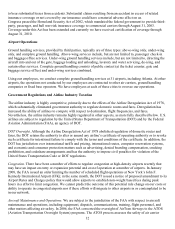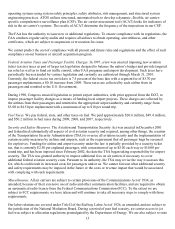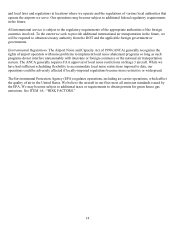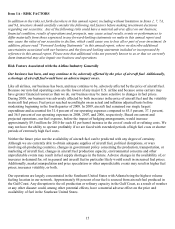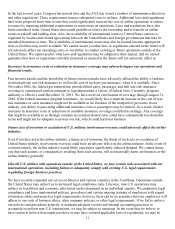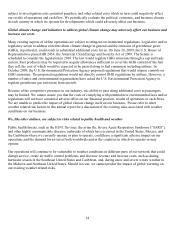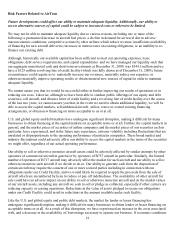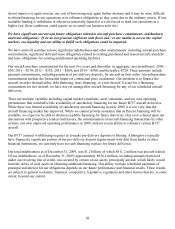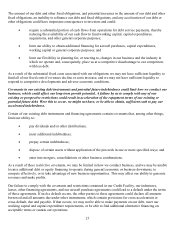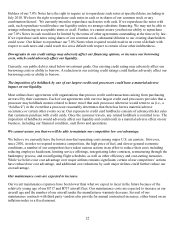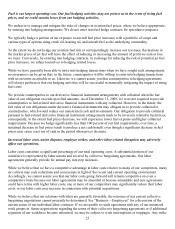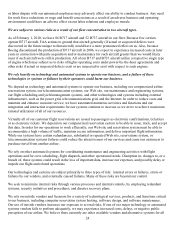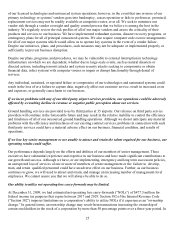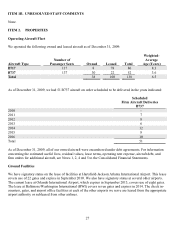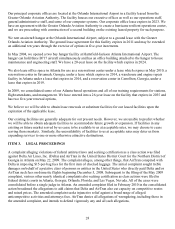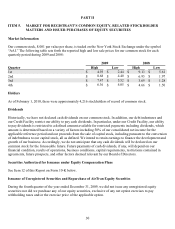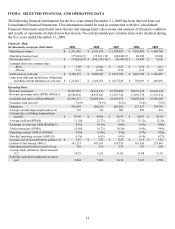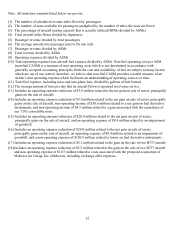Airtran 2009 Annual Report Download - page 31
Download and view the complete annual report
Please find page 31 of the 2009 Airtran annual report below. You can navigate through the pages in the report by either clicking on the pages listed below, or by using the keyword search tool below to find specific information within the annual report.22
Holders of our 7.0% Notes have the right to require us to repurchase such notes at specified dates, including in
July 2010. We have the right to repurchase such notes in cash or in shares of our common stock or any
combination thereof. We currently intend to repurchase such notes with cash. If we repurchase the notes with
cash, such repurchase would reduce our liquidity unless we arrange substitute financing. We may not be able to
arrange refinancing on acceptable terms or at all. Further, we cannot assure you that our ability to repurchase
our 7.0% Notes in cash would not be limited by the terms of other agreements outstanding at the time or by law.
If we repurchase such notes using shares of our common stock, substantial dilution to our existing shareholders
could occur. Our failure to repurchase our 7.0% Notes when required would result in an event of default with
respect to such notes and could result in a cross default with respect to certain of our other indebtedness.
Downgrades in our credit ratings may adversely affect our financing options, or increase our borrowing
costs, which could adversely affect our liquidity.
Currently, our public debt is rated below-investment grade. Our existing credit rating may adversely affect our
borrowing costs or ability to borrow. A reduction in our existing credit ratings could further adversely affect our
borrowing costs or ability to borrow.
The imposition of a holdback by one of our largest credit card processors could have a material adverse
impact on our liquidity.
Most airlines have agreements with organizations that process credit card transactions arising from purchasing
air travel by their customers. Each of our agreements with our two largest credit card processors provides that a
processor may holdback monies related to future travel that such processor otherwise would remit to us (i.e., a
“holdback”) in the event that a processor reasonably determines that there has been a material adverse
occurrence or certain other events occur. Our exposure to credit card holdbacks consists of advanced ticket sales
that customers purchase with credit cards. Once the customer travels, any related holdback is remitted to us. The
imposition of holdbacks would adversely affect our liquidity and could result in a material adverse effect on our
business, including our financial condition, cash flows and operations.
We cannot assure you that we will be able to maintain our competitive low cost advantage.
We believe we currently have the lowest non-fuel operating costs among major U.S. air carriers. However,
since 2001, in order to respond to intense competition, the high price of fuel, and slower general economic
conditions, a number of our competitors have taken various actions in an effort to reduce their costs including
reducing employee headcount, limiting service offerings, renegotiating labor contracts, restructuring through the
bankruptcy process, and reconfiguring flight schedules, as well as other efficiency and cost-cutting measures.
While we believe our cost advantage over major airlines remains significant, certain of our competitors’ actions
have reduced our cost advantage, and additional cost reductions by such major airlines could further reduce our
cost advantage.
Our maintenance costs are expected to increase.
Our recent maintenance expenses have been lower than what we expect to incur in the future because of the
relatively young age of our B717 and B737 aircraft fleet. Our maintenance costs are expected to increase as our
aircraft age and the number of our aircraft under the manufacturer warranty decrease. Several of our
maintenance contracts with third party vendors also provide for annual contractual increases, either based on an
inflation-index or a fixed amount.


